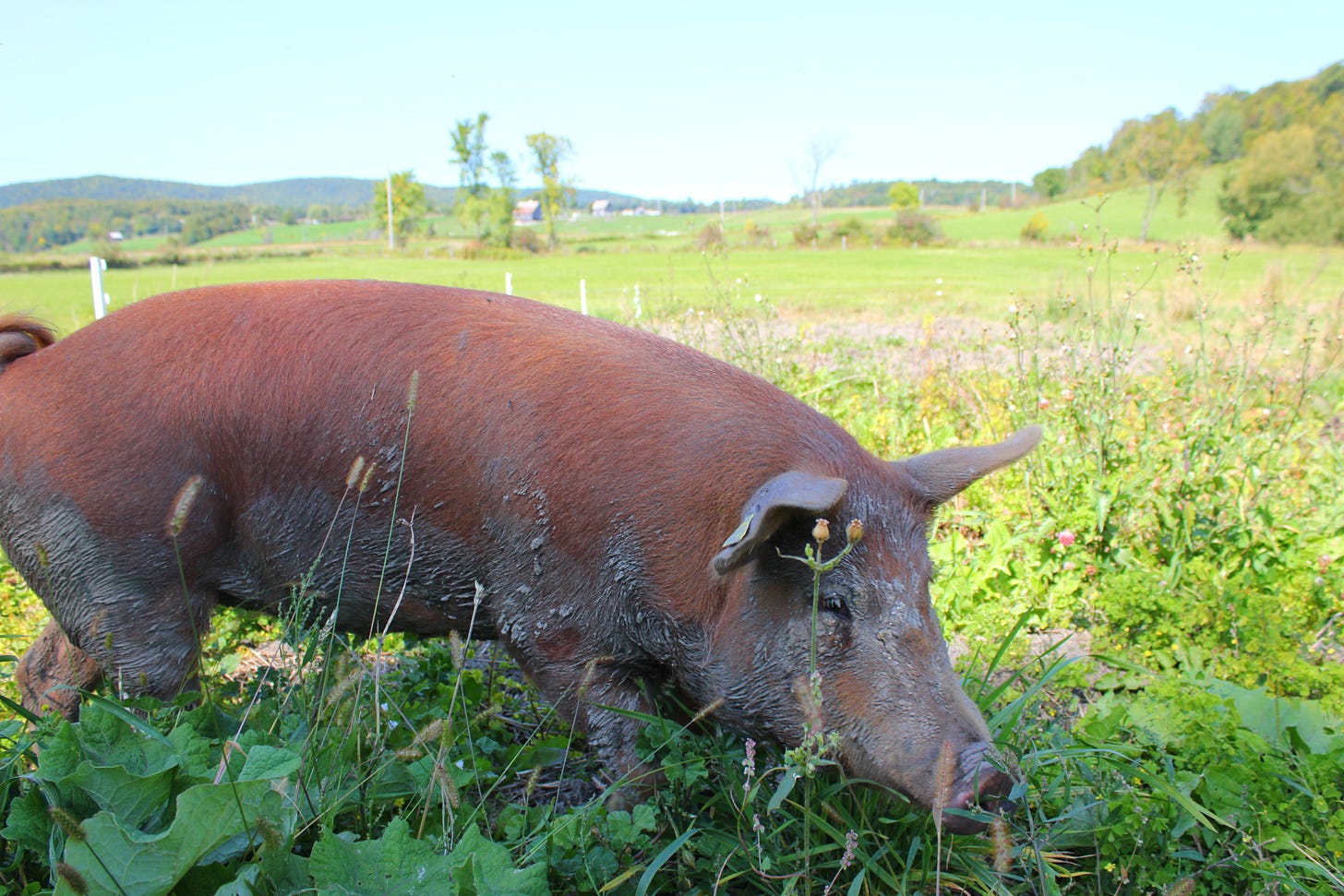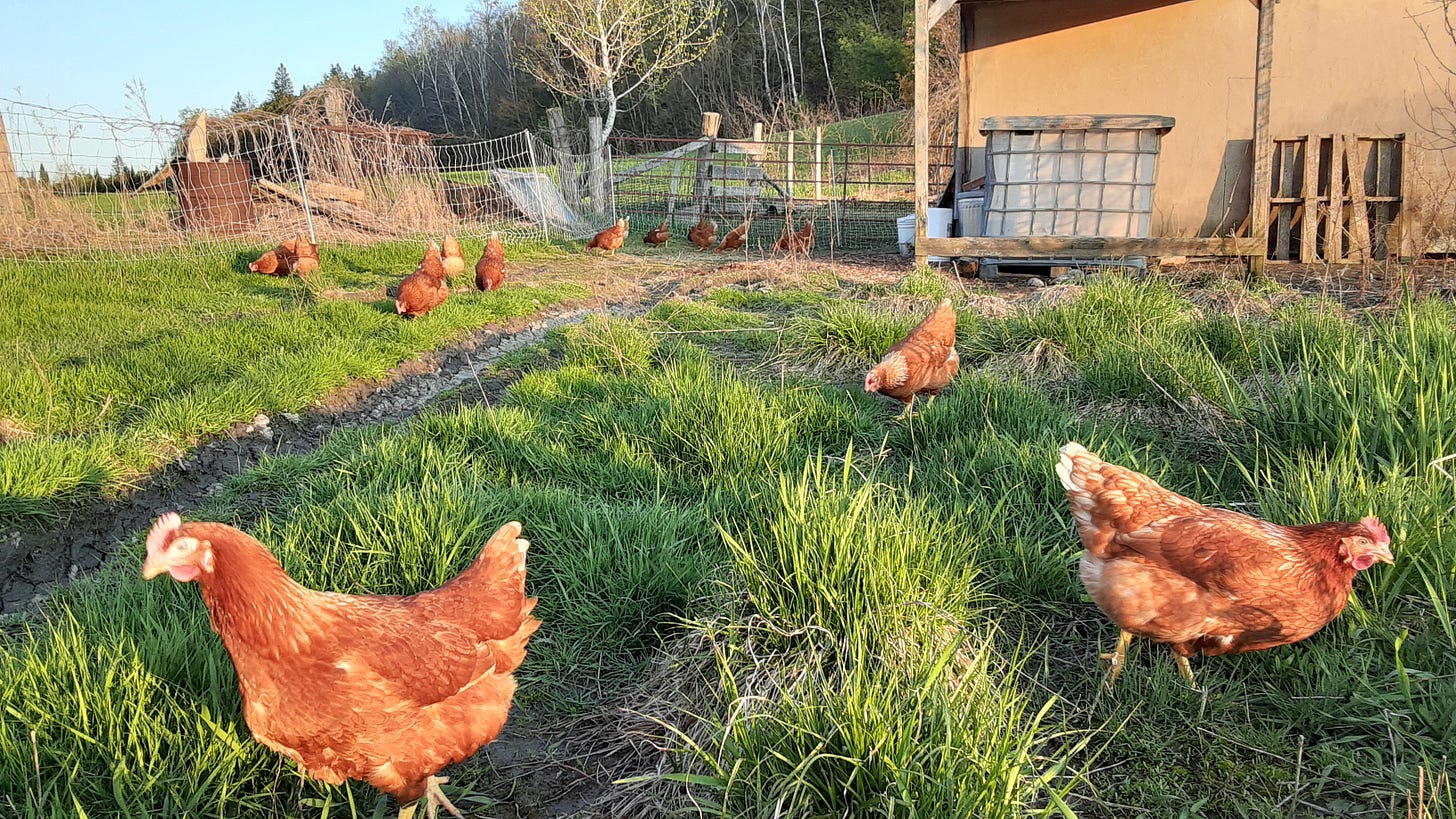How to Eat Like a Farmer - Part 3
We’re getting there! I’ve got four more food principles I live by to explore. Thanks for sticking with me! Here we go:
I aim for a diverse diet. If you’ve ever read a nutrition book, you’ve probably found it to be full of advice about what foods to eat to obtain the particular nutrient needed to support a specific bodily function. Eat turmeric to obtain curcumin to boost memory. It could be reduced to a mathematical formula: T=C=M. Our science loves this kind of reductionism, but foods can’t be reduced to a single nutrient, and our bodies can’t be reduced to one function. As much as our brains yearn to understand all the precise pathways by which the digestive system supports the life of a human being, I believe it is almost impossibly complex for the intellect to grasp all the individual permutations of how a body interacts with the food put into it. It requires systems thinking, not the single chain of cause and effect our Western minds prefer to engage. Perhaps someday AI will be able to fully understand it all and personalize dietary advice to each individual, but for now the best we have is the advice from a very wise and experienced practitioner working one-on-one with a single person, through trial and error. This was the MO of the shaman, but it’s hardly how our modern medical system works, with doctors incentivized to see as many patients as possible. Barring one person who can help you design the right diet for you, your best advisor is still yourself, your body, and learning to listen to what it has to say.
Nutritional “science”, often funded by industry groups to find nutrients in their specific food – low and behold – tends to find some good nutrients in almost everything. Thus we have polyphenols in red wine with anti-inflammatory and antioxidant properties; coffee conferring a range of benefits, from longer lives to stronger DNA; and maple syrup, my own industry, high in manganese and riboflavin. And they’re not wrong. The simple truth is that every plant, animal, and fungi contains nutrients, and that the human body needs at least some of almost all of them. As much as our binary thinking likes to sort everything into angels and devils, there are really no “good” or “bad” foods, just foods with varying degrees of different attributes to offer.
So I’m skeptical of most dietary advice to eat more of this or that food. Call me simple, but I just try to eat a diverse and balanced diet, with the assumption that the more diversity of foods I can get, the more diversity of nutrients I’ll obtain, and the more of my bodily functions will be well-supported. It’s also more interesting to eat that way.
This is one reason why I’m very reluctant to cut out a whole category of food, such as animal products. While it may be technically feasible to design a healthy diet without any help from animals, it’s far more difficult. If you can source your animal-based foods ethically – i.e. from farms practicing high animal welfare – it seems a better approach to me, nutritionally speaking.
And as someone who has studied and actively engaged in sustainable agriculture, I believe animals have an important role in play in supporting healthy, diverse farms. So livestock can be good for the planet, too. I won’t go into it all here, but I have written previously about the controversy surrounding ruminant livestock (cattle, sheep, goats) from a greenhouse gas perspective. If you’d like to get into the weeds of that, you can do so here.
Another common mistake I believe nutritional science makes is to focus on the “what” instead of the “how”. It assumes that all apples are the same, regardless of how they were grown. I place an emphasis on the “how”. Like the importance of “how” a farm animal was raised, I care deeply about whether my fruits and veggies are organic, local, or grown in healthy soils. When I do buy products from far away (bananas, coffee, and chocolate are all staples in my household), I look for the Fair Trade label. There is a world of difference between a fast-food hamburger patty and some grass-fed beef from a local farm, in terms of nutrition, ecological health, and animal welfare.
The same is true for organics. Many people misunderstand organics as being solely about protecting the consumer from trace amounts of pesticides. But everything is connected, and organics is really about protecting the larger environment from poisons, especially the farm workers forced to work with them (who die at a higher rate from cancers), the insects who feed songbirds and many other vertebrates, the amphibians and fish who live downriver from the agricultural runoff, and the millions of microscopic species who make up the soil food web – tiny beings who help produce more nutrient dense plants and prevent the erosion of our precious topsoil.
I try to eat minimally processed food. I’m not the first to notice that the edges of the grocery store are the healthiest places to shop. Supermarkets universally greet their patrons with the produce section, because it’s the most attractive. Then the edges are where it’s easiest to provide refrigeration, and food that can actually go bad tends to be the most alive. While the frozen food section provides many opportunities for the processed food giants to sing their siren song of convenience – at the expense of quality – for the most part the dairy, deli, and bakery sections are superior to the wasteland of boxed, bagged, and bottled foods that line the interior aisles.
It’s well known that the more food is processed, the more it’s strip mined of its nutrients. This is why I’m not particularly enthusiastic about the prospect of lab-grown meat. These “foods” take processing to a whole new level, while concentrating food production in the hands of a few capital intensive industrial processors. I’d much rather support a small family farm providing real food.
Going the less processed route also means cooking more from scratch. Processed foods often have unpronounceable ingredients in them, or more sugar or salt or unhealthy fats than you would add to food prepared at home, and are rarely fresh. When you DIY, you can use the best quality ingredients, and customize it to your taste buds. Food you learn to cook yourself is almost always better than anything you can buy. (Two major exceptions to this rule for me are bread and beer. I’ve tried making both at home, but over the years, the quality of these two food staples being made by real artisans in the local economy has simply far surpassed anything I’ve been able to achieve as an amateur. Some things are best left to the experts.) This approach has the added benefit of less packaging waste.
It’s also much cheaper. A bag of dried chickpeas that you make into your own hummus is a fraction of the cost of the grab-and-go version. I think it’s been my commitment to making food from scratch that has allowed me to basically not care much about the price of food while also not making a lot of money. While there are certainly some people whose low income forces them to seek out the cheapest food possible, many of us, if we shifted around some priorities in our lives, could afford to pay more. When I hear middle class people complain about the cost of organic food, I think about the years I spent living well below Canada’s “low-income threshold” of about $25,000 a year, yet perfectly able to afford practically any food I desired. Meals out were limited, as was travel and a host of other consumer goods, but I never skimped on food. Three times a day, when I sat down to dine, I got to feel rich. And I was.
Finally, let’s talk about the end of the food lifecycle, and how I try to minimize food waste. Since food is sacred to me, I hate to throw it out. The shocking levels of waste in our food system (around fifty percent by some measures) is Exhibit A in our irreverence towards the natural world, in my opinion. Wasting it is an affront to the life given by the plants and animals we eat. Calls to expand food production, usually through the latest life-annulling and/or corporate-strengthening technology, under the banner of “feeding the world”, should always be countered with “waste less”. We already produce more than enough food.
I keep leftovers and actually eat them. I try to use things up before they go bad. I generally cook based on the staples in my fridge and cupboards rather than go out and buy a lot of specialty items to make one recipe, then never use them again. I repurpose bones into stock.
If I can’t make use of some food scraps, I’ll feed them to my chickens. I actually think that everyone with a backyard should keep a few chickens. A coop should be as common a sight as a BBQ. Laying hens are easy to keep and will magically transform waste food into delicious eggs.
If food can’t be eaten by humans or livestock, then it should go into the compost pile. These are even easier to manage than chickens, and will eventually feed your garden, and yourself, closing the loop.
That’s it for Part 3. One more part to go! In Part 4, I’ll give a “day in the life” of what mealtimes look like for me. As before, if you’re already a subscriber, you’ve got nothing to do but twiddle your thumbs until it arrives one day soon in your inbox. If you’re not a subscriber, there’s a button for that below!
If you missed Parts 1 and 2, you can read them here and here.








